Sigma Xi 2018 Student Research Showcase
Environmental Sciences
 Catnip/Basil Bug Repellent
Catnip/Basil Bug Repellent
Amaia Arrese-Igor, American Heritage School
The researcher combined a catnip and basil plant in order to create an alternative to the chemical filled insect repellents that are widely used today.
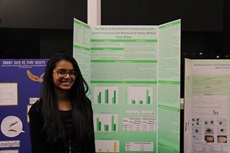 Phytoremediation Using Duckweed and Hinokitiol
Phytoremediation Using Duckweed and Hinokitiol
Eniya Krishnaraj, American Heritage School
My project is about the effect of hinokitiol in combination with Lemna minor on the removal of heavy metals from the water.
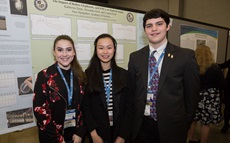 The Impact of Rodeo, Glyphosate, and POEA on Daphnia magna
The Impact of Rodeo, Glyphosate, and POEA on Daphnia magna
Katherine Duan, Phillips Academy; Leanna Kish, St. Paul's School; Alexander Kish, Phillips Exeter Academy
Our research examines the effects of the glyphosate based herbicide rodeo as well as the individual ingredients found in glyphosate based herbicides on the model organism Daphnia magna.
 Investigating the Effects of Acute Immersion Exposure to the Antidepressant Venlafaxine on Phototaxis in Larval Danio rerio
Investigating the Effects of Acute Immersion Exposure to the Antidepressant Venlafaxine on Phototaxis in Larval Danio rerio
Abdullah Afridi, Spruc Creek High School
I talked about why my research was relevant (why venlafaxine in waterways may be having effects on aquatic vertebrates), briefly outlined my methodology, and gave the fundamentals of my results and some potential applications.
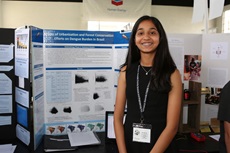 Effects of Urbanization and Forest Conservation Efforts on Dengue Burden in Brazil
Effects of Urbanization and Forest Conservation Efforts on Dengue Burden in Brazil
Akshara Vykunta, Mission San Jose High School
I studied the effects of urbanization and forest conservation efforts through geospatial analyses and statistical modeling.
 The Effect of Glycine Betaine on Coral Bleaching Due to Thermal Stress
The Effect of Glycine Betaine on Coral Bleaching Due to Thermal Stress
Sophia Ashiqueali, American Heritage School
It is predicted that the world's remaining coral reefs will disappear within the next 40 years. The leading cause contributing to this coral demise is heightened water temperatures. Excessive heat causes the dissociation of a key nutrient providing protein found in the chloroplasts of mutualistic algae residing on coral. Glycine betaine is an amino acid derivative that counteracts photo inhibition due to the deficiency of this protein. This experiment focused on the use of glycine betaine as a treatment for coral bleaching caused by thermal stress.
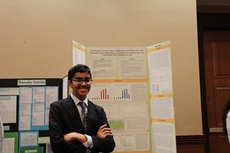 Genetic Modification of Chlamydomonas reinhardtii and Chlorella vulgaris as a Means of Inducing Multicellularity and Lipid Production in High Throughput Strains For Increased Efficiency in Biofuel Production
Genetic Modification of Chlamydomonas reinhardtii and Chlorella vulgaris as a Means of Inducing Multicellularity and Lipid Production in High Throughput Strains For Increased Efficiency in Biofuel Production
Rajat Ramesh, American Heritage School
My presentation is based around improving the production of biofuels from freshwater algae. My presentation looks at the genetic manipulation to improve algal lipid content, and this was assessed through various methods to observe if the genetic manipulation did indeed increase lipid content, thus improving algal biofuel production.
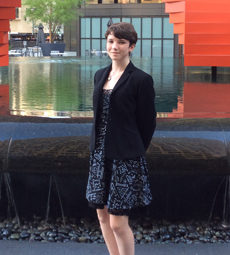 A Novel Approach to the Bioremediation of Concurrent 1,4-Dioxane and Chlorinated Solvent cis-DCE Contamination
A Novel Approach to the Bioremediation of Concurrent 1,4-Dioxane and Chlorinated Solvent cis-DCE Contamination
Lauren Waldman, American Heritage School
I used a new bioremediation approach to handle the inhibition of the breakdown of 1,4-Dioxane by cis-DCE. 1,4-Dioxane is a probable human carcinogen, and I wanted to find a more effective way to break it down in the presence of cis-DCE by using two bacterial species together that metabolized each compound individually.
 The Effect of Chlorhexidine Gluconate in Removing Bacteria
The Effect of Chlorhexidine Gluconate in Removing Bacteria
Shane Knopp, American Heritage School
The purpose of this experiment is to find out if the current methods of using chlorhexidine gluconate (chlorhexidine) or water to clean horse feed buckets is effective enough to keep horses from becoming ill or if the current cleaning methods of the feed buckets are unnecessarily thorough; if so, alternative methods can be used to clean the buckets instead of chlorhexidine or water.
 The Effect of Nonlinearity on Recalibrating the AQI and Air Pollutant Forecasting in a San Jose Urban Microclimate
The Effect of Nonlinearity on Recalibrating the AQI and Air Pollutant Forecasting in a San Jose Urban Microclimate
Srinivas Balagopal, Pinewood High School
Using nonlinear correlations, I proved that primary air pollutants have a higher impact on urban microclimates than meteorological factors, which accurately represents an aggregated Air Quality Index and allows for robust pollutant forecasting.
 A Highlight In Carbon Reduction
A Highlight In Carbon Reduction
Xiangkun Elvis Cao, Cornell University
Plants absorb carbon dioxide, water, and sunlight and convert them into food to grow through photosynthesis. The HI-Light reactor technology is an artificial photosynthesis reactor and engineered catalyst platform designed for CO2 conversion into fuels.
 The Effects Of Indoor Plants On Purifying Air
The Effects Of Indoor Plants On Purifying Air
Rebecca Huang, American Heritage School
In this experiment, two pots of each aloe and Bromeliad are tested by using the simulated cabin method. The sealed cabin fumigation method was adopted to simulate indoor smoke pollution environment, and the two pots of indoor plants were fumigated with cigarette smoke in the sealed glass chambers. The other two pots of aloe and Bromeliad are placed in the sealed glass chambers with clean air.
 Creating a Cost-Efficient Water Soluble Carbon Capture System for CO2 Emissions to Increase Biofuel Production Efficiency
Creating a Cost-Efficient Water Soluble Carbon Capture System for CO2 Emissions to Increase Biofuel Production Efficiency
Satya Alagarsamy, American Heritage School
My project aimed to try to create a nanoparticle that could absorb CO2 from power plant flue gas and then proceed to deposit that trapped CO@ in algae biofuel fields. By doing this we can decrease CO2 emissions while also decreasing the cost of algae by decreasing CO2 additive costs.
 The Effect Of Domestic Waste On Plant
The Effect Of Domestic Waste On Plant
ZhuoFan (Peter) Wang, American Heritage School
The focus of this research is to observe and analyze the phenomenon of domestic wastewater affecting plants’ life, using a control experiment with several different types of pollutant (wastewater) samples - collected from nearby residences and local restaurants.
 Risk Evaluation of Combined Pharmaceuticals in the Water Supply
Risk Evaluation of Combined Pharmaceuticals in the Water Supply
Lynn Lu, Scripps Ranch High School
Pharmaceuticals are identified in the water system. Combinations of pharmaceuticals are found to be higher in toxicity than the effects of individual pharmaceuticals due to drug-drug interaction.